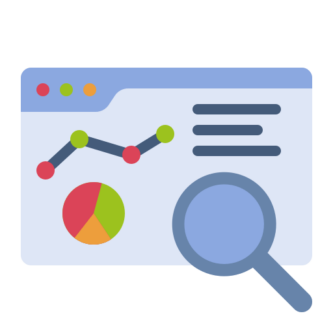How to Use Web Auditor
In the dynamic realm of online presence, where every click counts and user experience reigns supreme, the importance of a comprehensive website audit cannot be overstated. Imagine having a tool at your disposal that not only dissects the intricate layers of your website’s performance but also provides you with a roadmap for enhancement – that’s precisely what a website auditor does.
In this article, we explore the intricacies of website auditing and delve into the invaluable insights these tools offer. Let’s unlock the secrets of using a website auditor to propel your digital presence to new heights, ensuring a seamless and optimized experience for both users and search engines alike.

What is a Website Audit?
A website audit is a comprehensive analysis of a website’s health, performance, and SEO factors. It involves a systematic examination of various elements to identify strengths, weaknesses, and opportunities for improvement. This process aims to enhance a site’s overall quality, user experience, and search engine visibility.
Website audits typically encompass a multifaceted assessment of technical, on-page, and off-page SEO aspects, alongside content quality, user experience, and more. It involves scrutinizing factors like site structure, URL structure, metadata, content quality, page load speed, mobile-friendliness, backlinks, and overall user engagement.
Types of Website Audits
WebSite Auditor offers different types of audits to address various aspects of a website:
1. Technical SEO
Check for crawl errors, broken links, and redirects. Evaluate the site’s load speed and optimize where necessary. Ensure proper implementation of canonical tags and meta directives.
2. On-Page SEO
Analyze the relevance and effectiveness of title tags, meta descriptions, and header tags. Check keyword usage and optimize content for targeted keywords. Evaluate the overall content quality, readability, and user engagement.
3. User Experience
Assess website navigation and ensure a clear and intuitive user journey. Evaluate the mobile responsiveness of the site. Check the effectiveness of calls-to-action (CTAs) and forms.
4. Content Quality
Review the uniqueness and relevance of content. Check for duplicate content issues. Assess the use of multimedia elements like images and videos.
5. Backlink Profile
Examine the quality and quantity of backlinks. Identify and disavow toxic or spammy backlinks. Monitor anchor text distribution.
6. Security
Ensure the website has an SSL certificate for a secure connection. Check for vulnerabilities and apply necessary security updates. Implement measures to protect against common cyber threats.
7. Analytics and Tracking
Confirm the integration of analytics tools like Google Analytics. Review key performance indicators (KPIs) and set up goals for tracking conversions. Monitor user behavior and engagement metrics.
Benefits of Regular Website Audits
Learn about the significant advantages of using a website auditor —an indispensable tool that unveils hidden opportunities, rectifies issues, and empowers your online presence to thrive through enhanced performance, user experience, and search engine prominence.
- Improved Search Engine Rankings – Identifying and fixing SEO issues can positively impact a site’s visibility in search engine results.
- Enhanced User Experience – Optimizing navigation, load times, and content improves the overall user experience, leading to higher retention rates.
- Increased Conversion Rates – A well-optimized website is more likely to convert visitors into customers or subscribers.
- Better Security – Regular audits help identify and rectify security vulnerabilities, protecting both the website and its users.
- Data-Driven Decision-Making – Analyzing website performance data allows for informed decision-making in future marketing and development efforts.

How to Conduct a Website Audit
Conducting a thorough website audit is a crucial step in ensuring your online presence is optimized for performance, user experience, and search engine visibility. Here’s a step-by-step guide on how to conduct a comprehensive website audit:
1. Define Your Objectives
Clearly outline the goals of your website audit. Whether it’s to improve SEO, enhance user experience, or identify security vulnerabilities, having specific objectives will guide your audit process.
2. Crawl Your Website
Use website crawling tools like Screaming Frog or SEMrush to identify technical issues. This includes checking for broken links, crawl errors, and duplicate content.
3. Check Site Speed
Assess your website’s loading speed using tools like GTmetrix or Google PageSpeed Insights. Optimize images, minify CSS and JavaScript, and leverage browser caching to improve loading times.
4. Mobile Responsiveness
With a growing number of users accessing websites on mobile devices, ensure your site is mobile-friendly. Google’s Mobile-Friendly Test can help identify any issues.
5. Evaluate On-Page SEO
Review and optimize title tags, meta descriptions, header tags, and URL structures. Ensure that each page has a unique and descriptive title.
6. Content Analysis
Assess the quality and relevance of your content. Check for duplicate content, update outdated information, and ensure that your content aligns with your target keywords.
7. User Experience (UX) Assessment
Navigate through your website as a user would. Evaluate the ease of navigation, the clarity of calls-to-action, and the overall layout. Consider user feedback if available.
8. Backlink Profile Analysis
Use tools like Ahrefs or Moz to analyze your backlink profile. Identify high-quality backlinks and address any toxic or spammy links that could negatively impact your site’s reputation.
9. Security Check
Ensure your website has an SSL certificate for a secure connection. Regularly update your website’s software, plugins, and themes to protect against security vulnerabilities.
10. Review Analytics and Tracking
Confirm that analytics tools like Google Analytics are properly set up. Analyze key performance indicators (KPIs) and user behavior data to gain insights into your website’s performance.
11. Accessibility Check
Assess your website’s accessibility, ensuring it is usable for people with disabilities. Tools like WAVE or Axe can help identify accessibility issues.
12. Compliance with SEO Best Practices
Ensure your website complies with current SEO best practices. This includes having a sitemap, optimizing images, using proper header structures, and incorporating schema markup where applicable.
13. Social Media Integration
Check the integration of social media elements on your website. Ensure that social media sharing buttons work correctly and that your profiles are linked.
14. Generate a Comprehensive Report
Compile the findings of your audit into a detailed report. This report should include identified issues, recommended actions, and a prioritized plan for implementation.
15. Implement Changes and Monitor
Act on the recommendations outlined in your report. After implementing changes, monitor the impact on your website’s performance and user experience over time.
Tools for Website Audits
Performing a website audit involves a combination of manual analysis and the use of specialized tools to gather comprehensive data efficiently. Here’s a list of tools that can be instrumental in conducting different aspects of a website audit:
1. Google Analytics
Purpose: Analyzing Website Traffic and User Behavior
Key Features:
- Tracks user interactions and behavior on the site.
- Provides data on bounce rates, page views, and conversions.
- Helps identify popular pages and user demographics.
2. Google Search Console
Purpose: Monitoring Website Performance in Google Search
Key Features:
- Offers insights into how Googlebot sees your website.
- Provides data on search queries, indexing status, and site errors.
- Helps identify and fix crawling issues.
3. Screaming Frog SEO Spider
Purpose: Technical SEO and On-Page Analysis
Key Features:
- Crawls websites to identify technical issues.
- Analyses on-page elements like title tags, meta descriptions, and headers.
- Detects broken links and redirects.
4. Ahrefs
Purpose: Backlink Analysis and Competitor Research
Key Features:
- Provides comprehensive backlink analysis.
- Identifies referring domains and anchor text distribution.
- Offers insights into competitor strategies.
5. SEMrush
Purpose: SEO, Keyword Research, and Competitor Analysis
Key Features:
- Conducts keyword research and tracks keyword rankings.
- Analyzes competitors’ organic search strategies.
- Offers insights into paid search campaigns.

6. GTmetrix
Purpose: Website Speed Testing
Key Features:
- Evaluates website performance and page load times.
- Provides actionable recommendations for optimization.
- Measures various performance metrics.
7. Google PageSpeed Insights
Purpose: Assessing Website Speed and User Experience
Key Features:
- Offers insights into mobile and desktop speed performance.
- Provides suggestions for improving page speed.
- Assesses user experience on mobile devices.
8. W3C Markup Validation Service
Purpose: HTML and CSS Validation
Key Features:
- Checks HTML and CSS code for compliance with web standards.
- Identifies errors and warnings in the code.
- Helps maintain clean and valid markup.
9. Pingdom
Purpose: Website Monitoring and Performance Tracking
Key Features:
- Monitors website uptime and response times.
- Provides alerts for downtime and performance issues.
- Offers insights into the historical performance of the website.
10. Moz
Purpose: SEO and Local Search Insights
Key Features:
- Provides tools for keyword research and tracking.
- Offers insights into local search performance.
- Assesses on-page elements and identifies issues.
11. WAVE (Web Accessibility Evaluation Tool)
Purpose: Accessibility Testing
Key Features:
- Evaluates web content for accessibility issues.
- Provides visualizations of web page accessibility.
- Helps ensure compliance with accessibility standards.
12. SpyFu
Purpose: Competitor Analysis and Keyword Research
Key Features:
- Analyze competitors’ SEO and PPC strategies.
- Provides data on keyword rankings and ad performance.
- Offers insights into historical data.
13. Varvy SEO Tool
Purpose: On-Page SEO Analysis
Key Features:
- Checks for on-page SEO elements.
- Assesses mobile-friendliness and page speed.
- Provides recommendations for improvement.
14. Cyber Security Assessment Tool (CAT)
Purpose: Security Vulnerability Assessment
Key Features:
- Scans for security vulnerabilities.
- Assesses SSL configuration and potential risks.
- Identifies security weaknesses and provides recommendations.
15. Hotjar
Purpose: User Experience (UX) Analytics
Key Features:
- Captures user interactions and behavior through heatmaps.
- Records user sessions to identify pain points.
- Collects user feedback through surveys.
Summary
Using a website auditor is a critical step in optimizing the performance, visibility, and user experience of your website.
Website auditors are specialized tools designed to analyze various aspects of your site, providing valuable insights and actionable recommendations.
By regularly employing these tools, website owners can identify and address issues, ultimately improving search engine rankings, user experience, and overall website health.
The insights gained from a website audit enable informed decision-making, ensuring that your online presence remains competitive and aligned with best practices in the ever-evolving digital landscape.


